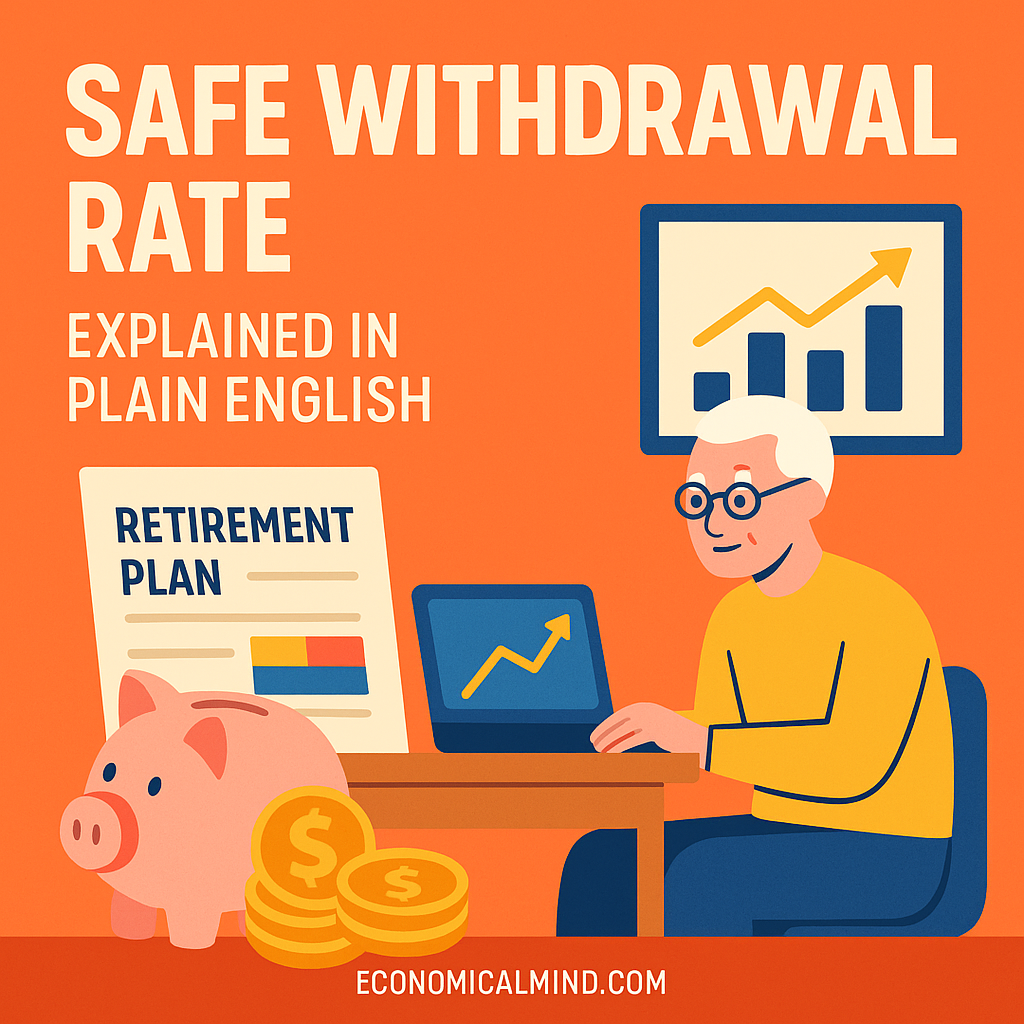
Why the Safe Withdrawal Rate Matters
You’ve spent decades saving and investing — but once you retire, the question becomes:
How much can you safely spend each year without running out of money?
That’s where the safe withdrawal rate comes in.
It’s a simple rule of thumb that helps retirees balance income and longevity, ensuring your money lasts as long as you do.
Step 1: What Is a Safe Withdrawal Rate?
A safe withdrawal rate (SWR) is the percentage of your retirement savings you can withdraw each year — adjusted for inflation — while maintaining enough to cover your lifetime.
In plain English: it’s how much you can take out of your nest egg without draining it too fast.
The most common guideline is the 4% rule — meaning you can withdraw 4% of your total savings in your first year, then adjust that amount each year for inflation.
Step 2: How the 4% Rule Works
Let’s say you retire with $1,000,000 saved.
- In your first year, you’d withdraw 4% = $40,000.
- Each year after, you adjust for inflation (for example, $41,200 if inflation is 3%).
- The rest stays invested, ideally growing enough to replace what you withdrew.
This rule comes from research showing that a 4% rate historically allows most retirees to make their money last 30 years or more.
Step 3: Why 4% Isn’t a Magic Number
While the 4% rule is a great starting point, it’s not one-size-fits-all.
Several factors can change what’s “safe” for you:
- Market conditions: A bear market early in retirement can shrink your portfolio faster.
- Longevity: Living longer means your money needs to stretch further.
- Spending flexibility: If you can reduce spending in down years, you can safely withdraw more overall.
- Investment mix: A diversified portfolio (stocks, bonds, cash) helps balance growth and safety.
Some advisors now suggest 3.5% for a more conservative plan or 4.5–5% for those with strong investments or shorter retirements.
Step 4: Adjusting for Inflation
Inflation eats away at your purchasing power — so it’s critical to account for it.
That’s why the 4% rule isn’t a fixed amount forever; it increases each year based on inflation.
For example:
- Year 1: $40,000
- Year 2 (3% inflation): $41,200
- Year 3 (2% inflation): $42,024
This helps your lifestyle stay consistent, even as prices rise.
Step 5: Modern Alternatives to the 4% Rule
Today’s retirees often use flexible withdrawal strategies that adapt to market conditions:
- Dynamic Withdrawals: You adjust yearly spending based on portfolio performance.
- Guardrail Method: Withdraw more when markets are up, cut back when they’re down.
- Bucket Strategy: Separate savings into short-term (cash), medium-term (bonds), and long-term (stocks) buckets.
These approaches offer more control — especially in unpredictable markets.
Step 6: How to Calculate Your Own Rate
To personalize your safe withdrawal rate:
- Estimate your annual expenses in retirement.
- Multiply that by 25 to find your target savings.
- Example: $50,000 x 25 = $1.25 million (for a 4% withdrawal).
- Adjust based on your comfort level and risk tolerance.
This gives you a simple goal: your savings should equal roughly 25 times your annual needs.
Step 7: Don’t Forget Taxes and Fees
Withdrawals from traditional 401(k)s and IRAs are taxed as income, while Roth IRAs grow tax-free.
Your real safe withdrawal rate should factor in:
- Taxes (federal and state)
- Investment fees
- Healthcare costs
A 4% withdrawal before taxes might shrink to 3.5% after deductions — so plan accordingly.
Bonus Tip: Review Your Plan Annually
Your safe withdrawal rate isn’t set in stone.
Revisit it each year to reflect changes in:
- Market performance
- Inflation
- Lifestyle or health needs
Being flexible keeps your plan sustainable through every economic season.
Final Thoughts
A safe withdrawal rate gives you a clear, confident starting point for retirement spending.
It’s not about perfection — it’s about balance.
By withdrawing thoughtfully and adjusting when needed, you can enjoy your savings without fear of running out too soon.
Your retirement should be about freedom — not financial stress.
